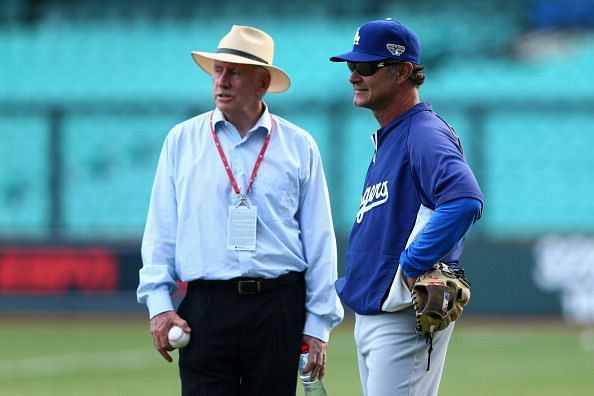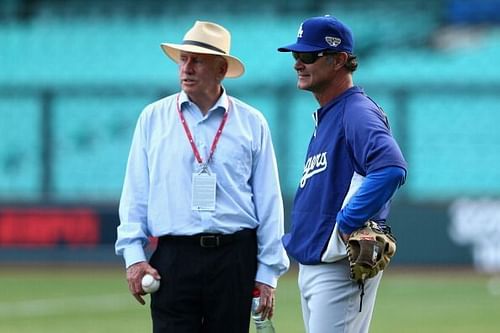
Opinion: Can fast bowlers learn a lesson from their American cousins in Baseball?

Disclaimer: This piece isn't about cricket and baseball cross-over or a discussion about which is harder. If you are interested in one of those silly comparisons, there are several avenues on the internet to knock yourself out.
Some time back I came across a New York Times article that talks about how batting scores are dwindling in Baseball since the last couple of decades. So much so that the recently concluded Major League Baseball season had the lowest batting average since 1972. It's a worrying trend for stakeholders of the game who think the low batting average is responsible for driving the fans away from the game.
As Erik Neander, the general manager of Tampa Bay Rays puts it in the New York Times piece,
People don’t come to see the umpire call a ball or a strike or a foul ball. I think it’s something we have to be mindful of, because this is an entertainment business, and we are here for the fans.
Without getting too deep into baseball technicalities, batsmen in Baseball are looking to score a higher percentage of their runs in the form of home runs, and pitchers (the equivalent of bowlers in baseball for the uninitiated) are affecting more strikeouts. This means there are fewer hits per game and that creates extended dull periods for the fans where nothing much seems to go on.
Those of us who have lamented the balance of cricket getting tilted in favour of batsmen over the years have an important lesson in this. While a balance between offence and defence is essential for any sport to thrive, you'd rather err on the side of offence than defence if you want to draw the crowds.
Analytics and Athleticism
Analytics and Athleticism are two of the reasons for the surge of pitchers in baseball. Data analysis tells teams where exactly to direct your pitch and where exactly to place your fielders against every batter. Better athleticism means there is a staggering rise in the number of pitchers who can crank it up to 100 mph. Pitchers in baseball have improved their skills better than batters. They are not only throwing it at a higher velocity but also bowling better changeups and sliders.
Which brings us to the other important lesson for cricket where the trend is exactly the opposite, with the bat dominating the ball. If bowlers want to pull back the balance of the game back in their favour, they need to get better at their skills, fitness and strategy.
Before you point out that the rule changes and better bats have stacked the odds in favour of batsmen, even baseball has done its bit to curb the pitcher. They banned "spitball" that prevented pitchers from applying saliva on the ball to get more swing and kept reducing the "strike zone" to restrict the area where pitchers can target allowing batters to line them up better.
Innovate or Perish
In cricket, batsmen have innovated with every aspect of their technique. Yes, the bats have got better but the batsmen deserve some credit too. A batsman in 2018 is almost unrecognizable say a batsman in 1978. Mindset, stance, backlift, bat swing, hitting areas, the variety of strokes, the batting community has proactively looked into every aspect of batsmanship and made changes to hit the ball further with higher consistency.
The fast bowlers though still rely on the same techniques and methods that they used 40 years ago. They run-in, wind up and bowl the ball in almost exactly the same fashion. If fast bowlers had the same improvement curve as the baseball pitchers, then every team in international cricket would have had one 100+ mph bowler in its rank by now.
Will the real fast bowler stand up
To their credit, fast bowlers have developed subtle changes and innovations like knuckleballs but clearly, they are still struggling to keep the batsmen in check. The fast bowling camp needs to rethink everything from the ground up. Cricket teams need to get into an arms race of fast bowling weaponry to develop the perfect fast bowler. The biomechanics experts of the world need to study body types and bowling actions around the world and develop the most economical and injury free way of bowling as fast as a human body can.
Two of the most effective fast bowlers who have managed to restrict batsmen from breaking free in this decade are Malinga and Bumrah. That both of them had an unorthodox style that defies conventional fast bowling wisdom may not be a coincidence.
To help the bowlers, we frequently days about things like legalizing ball tempering, allowing more flexing of arms or using Dukes ball throughout the world. All this discussion will be rendered useless by a freak who can bowl six out of six at 100 plus mph. Fancy your T20 slogger against that kind of bowling. This may seem far-fetched at the moment but baseball has shown it is doable if not over the course of a couple of seasons then surely over the course of a couple of decades.